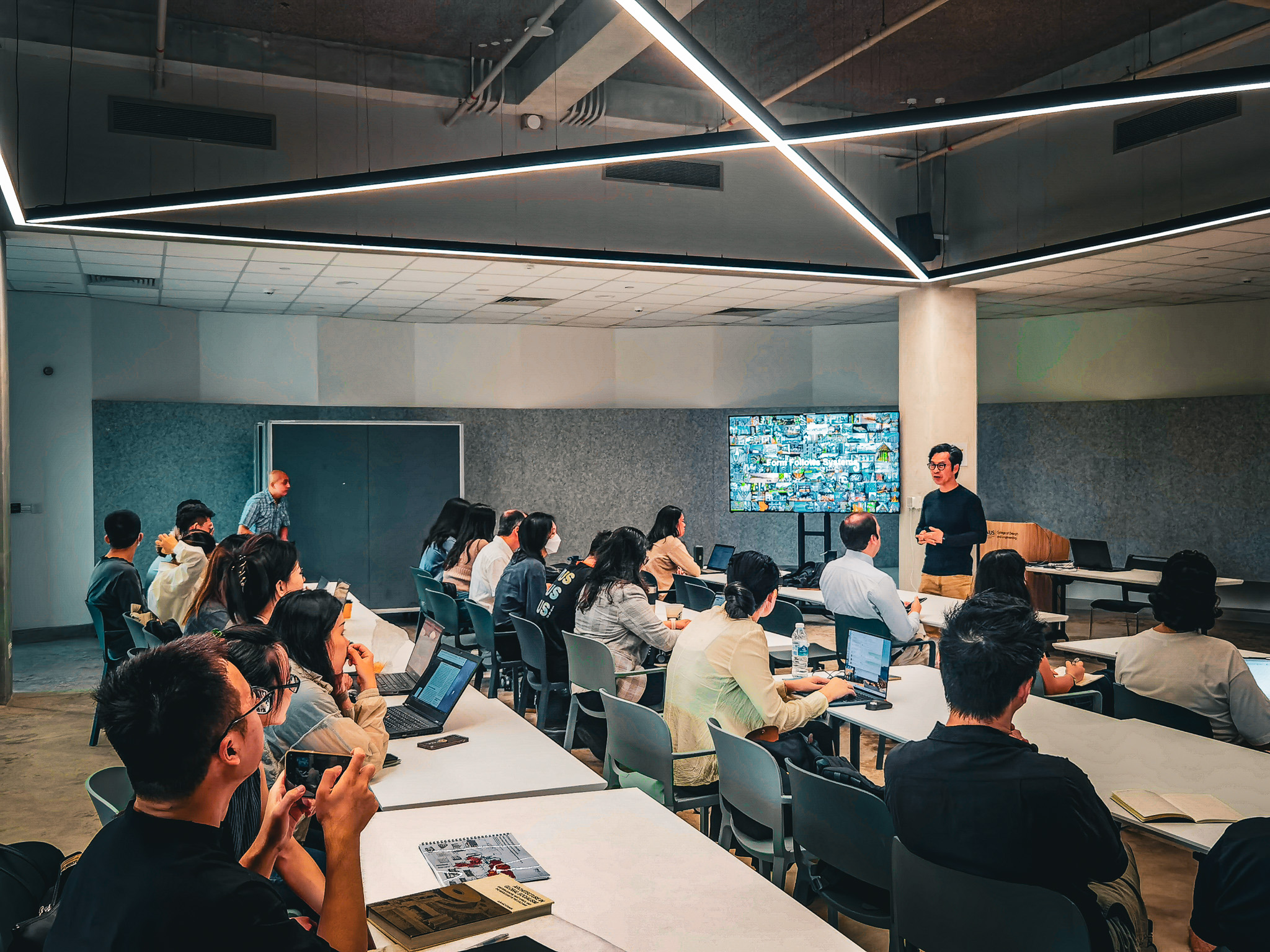Graduate Research Symposium 2024

Human Perception and Behaviour
Time: 10:30AM – 12:30 PM
Venue: ER2, SDE4
Moderated by: Dr. Ruzica Bozovic-Stamenovic, Associate Professor
Speakers:
Freyaan Anklesaria
Cognitive complexity in Architectural Layouts
Abstract: Understanding the complexity of architectural space and its cognitive implications remains a challenging endeavour in architectural research. While traditional approaches have focused on functional, scalar, and formal aspects of complexity, cognitive complexity, and its relationship to configurational properties and their implications for sense of place have received limited attention. Building upon the author’s previous research that distinguishes architectural cognition from spatial cognition by incorporating subjective spatial beliefs, this study aims to bridge these two areas of inquiry.
The primary objective is to investigate whether cognitive complexity in architectural space is influenced by configurational complexity. Hypotheses propose that configurational complexity, particularly its predictability, plays a significant role in causing/explaining cognitive complexity. Additionally, the study aims to explore the impact of complexity on the sense of place within architectural environments. The literature review encompasses diverse conceptualizations of complexity, including algorithmic complexity and cognitive complexity, from a range of different disciplines: architecture, information theory, phenomenology, cognitive science and psychology. Methodologically, a combination of spatial analysis, eye tracking experiments, and survey techniques is employed to gather quantitative and qualitative data. Statistical analysis techniques, including correlation, regression, and mediation analysis, are utilized to examine the relationships between configurational properties, cognitive complexity, and sense of place.
The theoretical framework conceptualizes architectural cognition as the interplay between spatial configuration, predictability, and qualitative spatial beliefs. It emphasizes the subconscious nature of cognitive processes involved in perceiving and navigating architectural space. The study’s findings contribute to advancing our understanding of architectural cognition and have implications for architectural design practice. Overall, this research aims to elucidate the relationship between configurational complexity, cognitive processes, and the qualitative perception of place within architectural environments.
Joni Ong Ker Shing
The Performance Evaluation of Socio-Spatial Development Patterns in Singapore’s MRT stations in Sustainable Integrated Districts
Abstract: Urban transportation intricately weaves itself into the fabric of cities, forming a dynamic system that supports and enhances urban life. The function of urban metro stations as a distinctive building type is rapidly changing in response to the dynamics of urban growth showcasing how the role of stations influences the creation of sustainable communities. Beyond their transportation function, stations are also recognized as urban social spaces that are deeply connected with urban texture and public life by encouraging higher density, and mixed-use development around their vicinity. This establishes the need to understand human movement within the network and how people move through these built spaces. The study investigates the Sustainable Integrated District in Singapore’s context which is renowned for its high urban density and unique position not only as a hub for innovation research and high technology, but also for its high degree of mix-use and intensity vital to a vibrant community. To support its dense urban environment the Mass Rapid Transit (MRT) system identifies stations as nodes that influence human movement within the three-dimensional environment, all this while acting as a complex system. By analyzing the relation between human beings and the inhabited spaces, insights to how the space is being used and perceived as well as social behaviours can help enhance the qualitative design & performance of stations and the integrated urban system. The research aims to develop a framework to evaluate the socio-spatial performance of spatial development patterns and social interactions of MRT stations and its interaction with the larger fabric within Sustainable Integrated Districts.
Liow Zhengping
Unquestioned Traditions: Discoursing The Relevance of Master-Apprentice Design Pedagogy in The Contemporary Studio
Abstract: As our world becomes increasingly ambiguous and uncertain, the Master-Apprentice design studio pedagogy remains unquestioned. Design tutors often receive little pedagogical training and tend to fall back on this hierarchical model’s techniques, which they have previously experienced. The Master-Apprentice model emphasises ‘production/doing’ and ‘mimicry’ in imparting desired skill sets, artistries, and ideologies to emulate the tutor’s success and wisdom through ‘converging’ processes of mimicry and conformity that foregrounded desires towards technical expertise, stylistic and aesthetic excellence. However, the relevance of the Master-Apprentice’s rituals and value systems were sporadically challenged. As we transition to a transdisciplinary-driven fourth industrial revolution, it is critical to reimagine pedagogies that shift the emphasis from ‘doing’ to ‘diverging’ explorations to scaffold imaginative outcomes and inculcate collaborative mindsets. The excessive ‘certainties’ dispensed through the Master-Apprentice pedagogy may threaten learners’ confidence in navigating the iterative design process, as the dispensed tacit ‘hidden curriculum’ potentially contributes to the decline of students’ mental well-being and limits their potential to excel academically. This study argues that when the social conditions of the design studio are capitalised as social support in a hierarchical learning environment, the detriments of Master-Apprentice studio pedagogy can be alleviated.